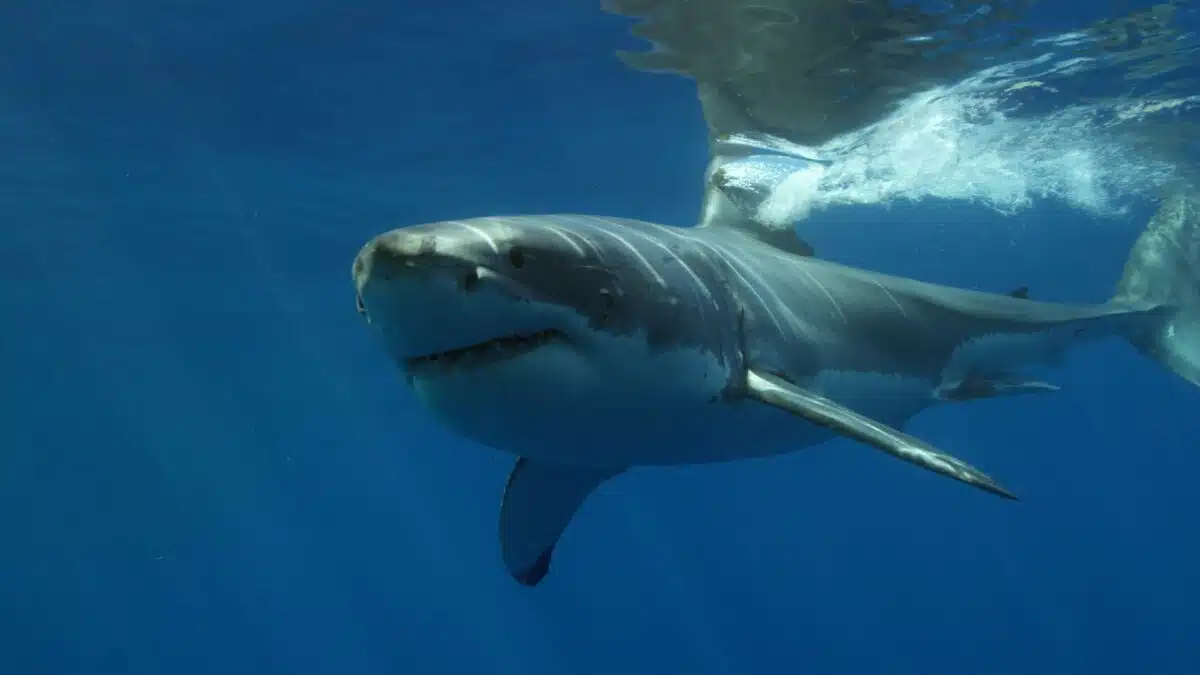In the vast and mysterious depths of the ocean, two formidable creatures hold their titles as legendary apex predators. On one side, we have the Great White Shark, a fearsome hunter patrolling the coastal waters with its powerful presence. On the other side, we have the Australian Box Jellyfish, an enigmatic creature lurking in the tropical seas with its sheer beauty hiding a deadly secret.
Brace yourself as we delve into the epic clash between these two oceanic titans and explore their fascinating characteristics, unique adaptations, and awe-inspiring battle for supremacy.
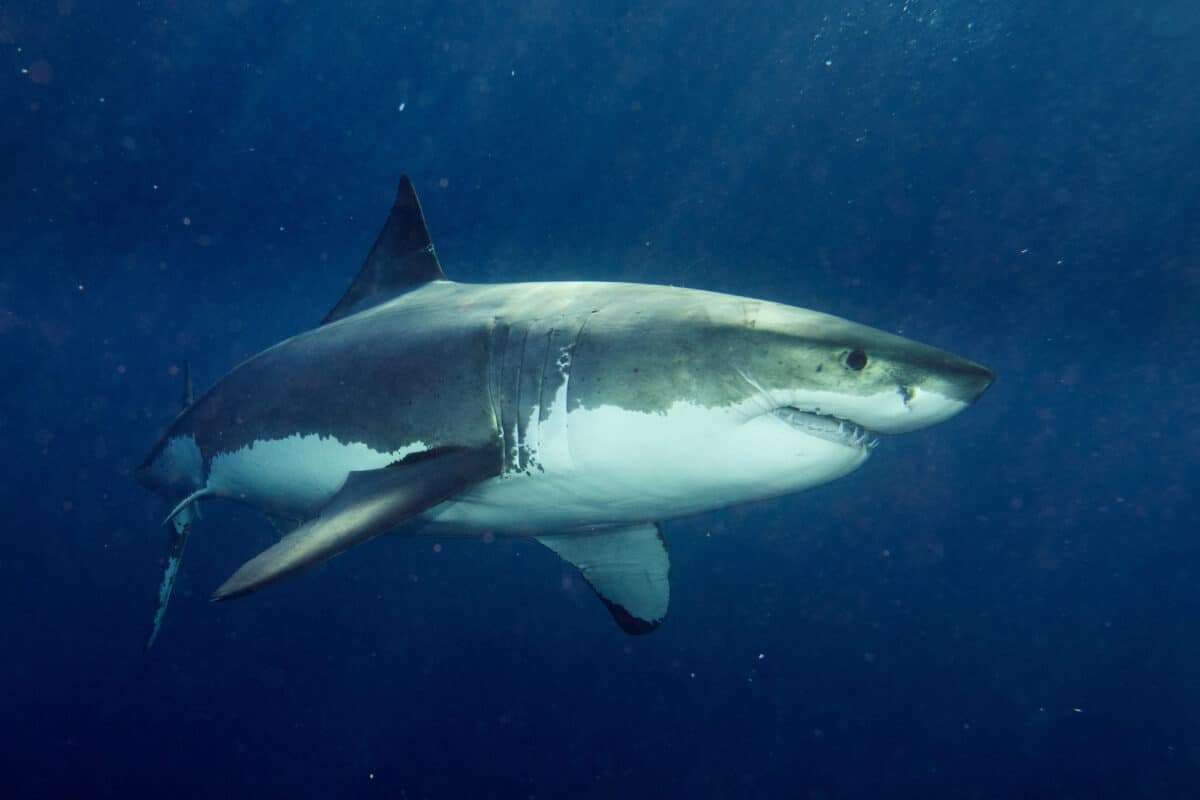
Key Points
| Great white sharks are often seen near seal and sea lion colonies, which provide a reliable food source for these animals. They prefer cooler water temperatures and are nearer to the surface in the summer when the waters are warmer. |
| The Australian Box Jellyfish prefers to reside in the waters of the Australian continent, including the Great Barrier Reef, the tropical north, and the western and northwestern coasts of the country. |
| While the Great White Shark relies on brute force and lightning-fast attacks to overpower its prey, the Australian Box Jellyfish employs its venomous tentacles and delicate touch to incapacitate unsuspecting victims. |
| The Great White Shark regulates the populations of marine mammals and maintains a healthy ecosystem, while the Australian Box Jellyfish serves as a prey item for various marine species. |
| With their contrasting features, unique adaptations, and captivating survival strategies, they continue to captivate our imaginations. |
Want to jump ahead? Click below
Comparison Table
| Features | Great White Shark | Australian Box Jellyfish |
|---|---|---|
| Diet and Feeding Behavior | Fish, seals, sea lions, sharks | Fish, shrimps, small aquatic animals |
| Size | Length: Up to 20 feet Weight: Over 5,000 pounds | Diameter: Up to 1 meterTentacles: Up to 3 meters |
| Physical Characteristics | Large triangular dorsal fin | Transparent or pale blue bell-shaped body |
| Predatory Behavior | Stalks prey from below, surprise attacks | Paralyzes prey with venomous tentacles |
| Threat Level | Vulnerable (IUCN) | N/A (no official classification) |
| Human Interaction | Rare unprovoked attacks; mistaken identity | Highly dangerous venomous sting |
| Precautions For Humans | Exercise caution when swimming or surfing | Immediate medical attention required |
| Encounter Outcome | Thick skin offers some protection | Disastrous sting could affect hunting ability |
| Importance in Ecosystem | Regulates marine mammal populations | Prey item for various marine species |
| Conservation Efforts | Protection measures in place | N/A (no official conservation status) |
The Great White Shark
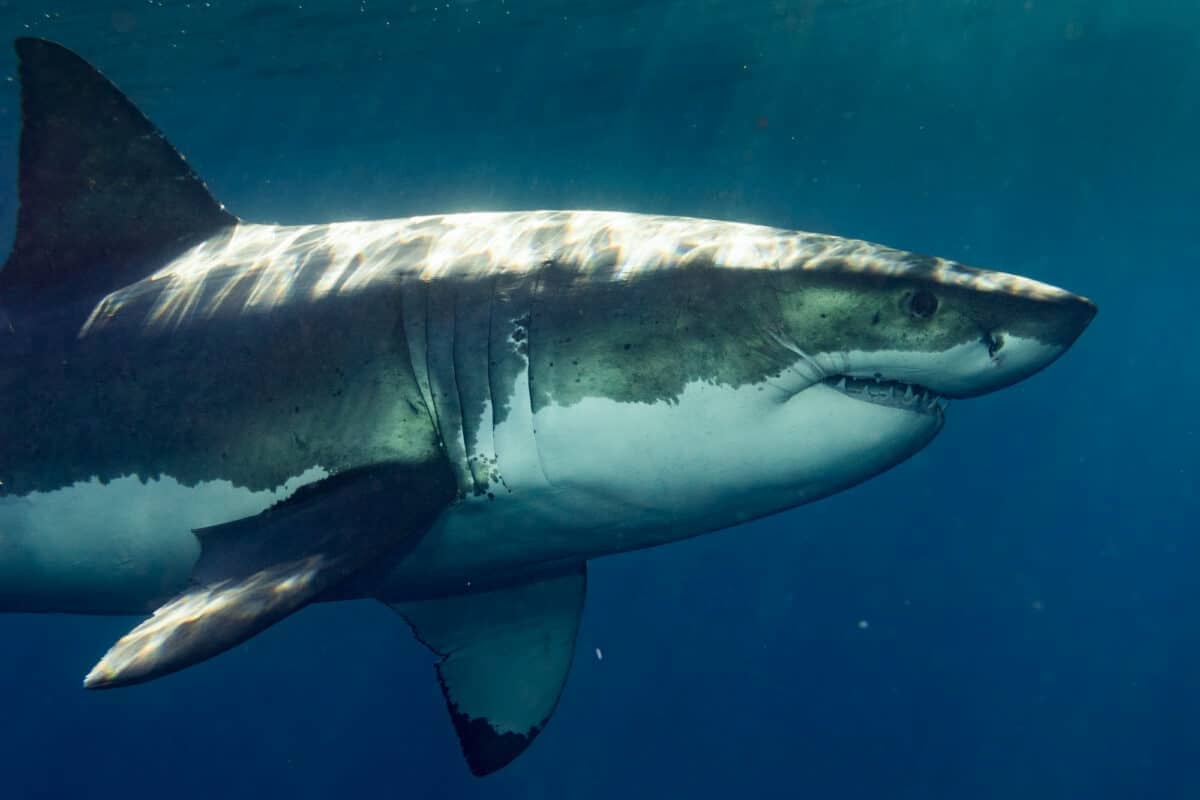
With its sleek and robust body, the Great White Shark is a marvel of nature. This iconic predator strikes fear into the hearts of many, known for its immense size and razor-sharp teeth.
Habitat And Range
The habitat of the great white shark is vast, spanning all of the world’s major oceans. These apex predators can be found along the coasts of California and in the waters near Australia and South Africa. Moreover, these sharks are often seen near seal and sea lion colonies, which provide a reliable food source for these animals. They prefer cooler water temperatures and are nearer to the surface in the summer when the waters are warmer.
Diet And Feeding Behavior
Great White Sharks are apex predators, feeding primarily on fish, seals, sea lions, and other sharks. Moreover, they rely on their incredible speed, agility, and sensory acuity to catch prey. When hunting, Great White Sharks stalk their prey from below and launch a surprise attack with incredible speed and force, crushing their prey to pieces.
Physical Characteristics
Great White Sharks can grow up to 20 feet long and weigh over 5,000 pounds. They are easily recognizable due to their large triangular dorsal fin, powerful jaws filled with razor-sharp teeth, and a distinct gray coloring on their back and white color on their belly.
Predatory Behavior
The hunting techniques of the Great White Sharks involve stalking prey from below and launching a surprise attack. They will often bite their game before backing off and waiting for it to weaken before moving in for the kill. Great White Sharks also use the element of surprise when attacking seals and sea lions, launching themselves out of the water and onto the shore.
Interaction With Humans
Great White Sharks are often portrayed as man-eating monsters in popular culture, but unprovoked attacks on humans are rare. Most attacks occur when a shark mistakes a human for its natural prey, such as a seal or sea lion. However, interactions with Great White Sharks can be dangerous, and people need to exercise caution when swimming or surfing in areas with high populations of these sharks.
The Australian Box Jellyfish
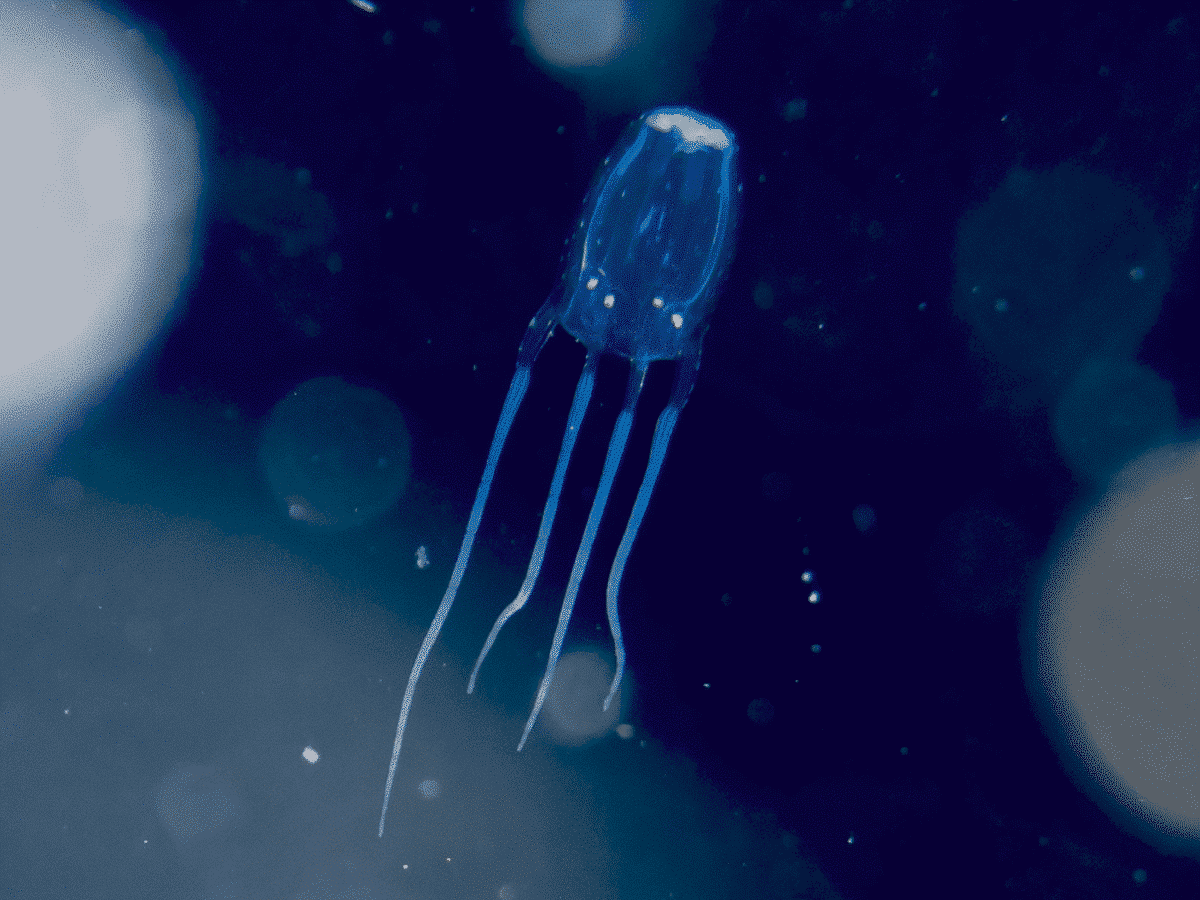
Australian Box Jellyfish, also known as Chironex fleckeri, is a dangerous marine species predominantly found in the waters surrounding Australia. This creature has earned the reputation of being one of the most venomous marine animals on the planet, with its sting capable of causing severe pain, shock, and even death.
Habitat And Range
The Australian Box Jellyfish prefers to reside in the waters of the Australian continent, including the Great Barrier Reef, the tropical north, and the western and northwestern coasts of the country. These creatures can also be found in the waters of Papua New Guinea and other regions of the South Pacific. They are most commonly found in shallow, muddy estuaries and sheltered bays.
Diet And Feeding Behavior
The Australian Box Jellyfish is a carnivorous species, mainly feeding on fish, shrimps, and other small aquatic animals. They use their venomous tentacles to paralyze and stun their prey, which they then pull towards their mouth using their tentacles.
Physical Characteristics
The Australian Box Jellyfish can grow up to a meter in diameter, with a domed bell-shaped body that is transparent or pale blue. They have eight tentacles that can grow up to three meters long, each lined with thousands of stinging cells called nematocysts. These tentacles are positioned around the bottom edge of the bell-shaped body. Moreover, the box jellyfish has four sets of eyes, two of which can detect light and darkness, while the other two are more complex and can see color and detect movement.
Venomous Stings
Each of its tentacles has thousands of nematocysts, which release venom when triggered by contact with prey or humans. The poison rapidly diffuses through the victim’s skin, causing severe damage to the tissues and organs.
Effects On Humans
The sting of the Australian Box Jellyfish can cause excruciating pain, nausea, vomiting, abdominal cramps, difficulty breathing, and even cardiac arrest. In some cases, the venom may cause severe damage to the nervous system and lead to long-term disability or death. Hence, it is the deadliest jellyfish known to humans.
Treatment And Management
Immediate medical attention is required for anyone stung by an Australian Box Jellyfish. The person should be rushed to a hospital for proper treatment, including anti-venom medication, oxygen therapy, and other supportive care. Effective management of the marine environment, public education, and research are critical in reducing the risk of jellyfish stings.
Deadly Encounter Of The Two Formidable Predators
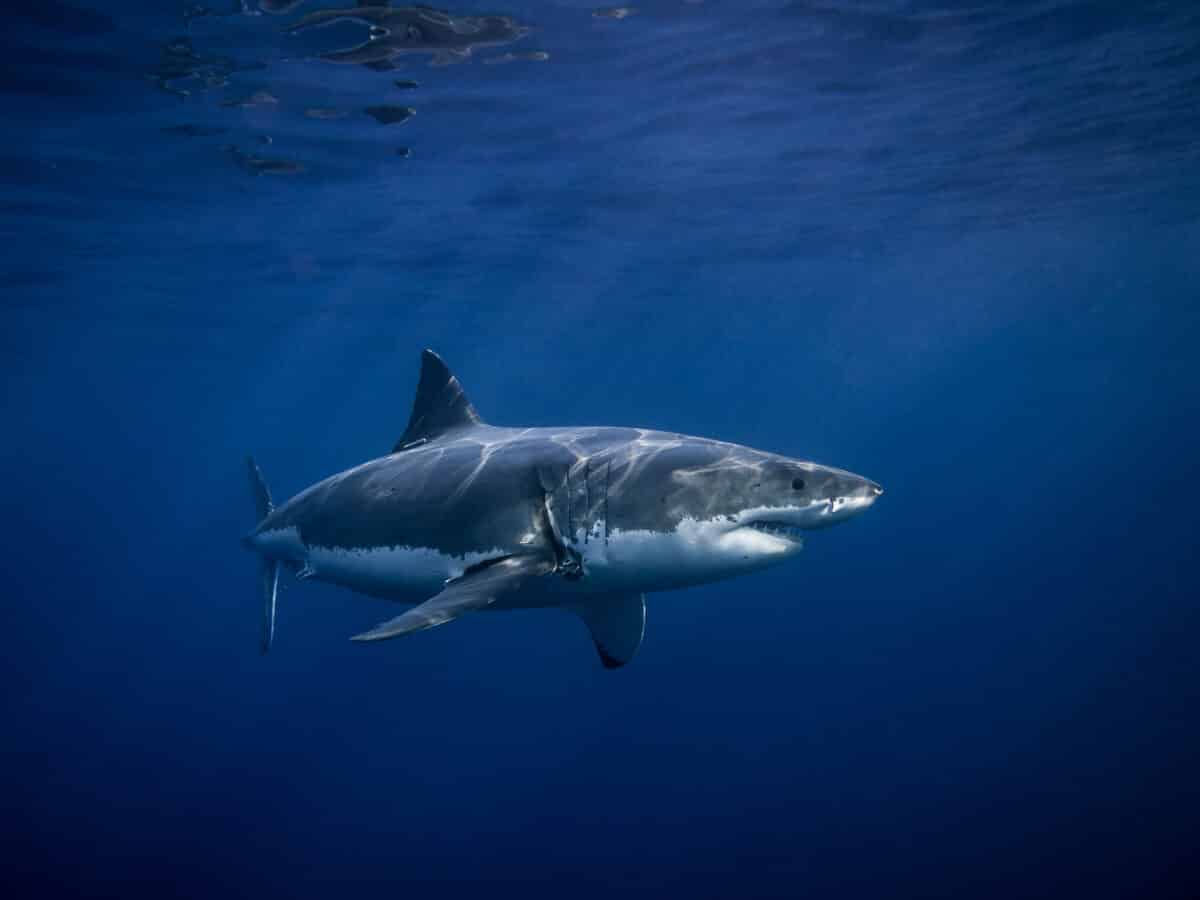
What happens when these two oceanic powerhouses cross paths? It’s a clash of contrasting strategies and survival mechanisms. While the Great White Shark relies on brute force and lightning-fast attacks to overpower its prey, the Australian Box Jellyfish employs its venomous tentacles and delicate touch to incapacitate unsuspecting victims.
If a Great White Shark were to encounter a Box Jellyfish, its thick skin and tough scales might provide some protection against the jellyfish’s stinging cells. However, a direct encounter with the tentacles could still be disastrous for the shark, causing intense pain and affecting its ability to hunt and feed.
FAQs
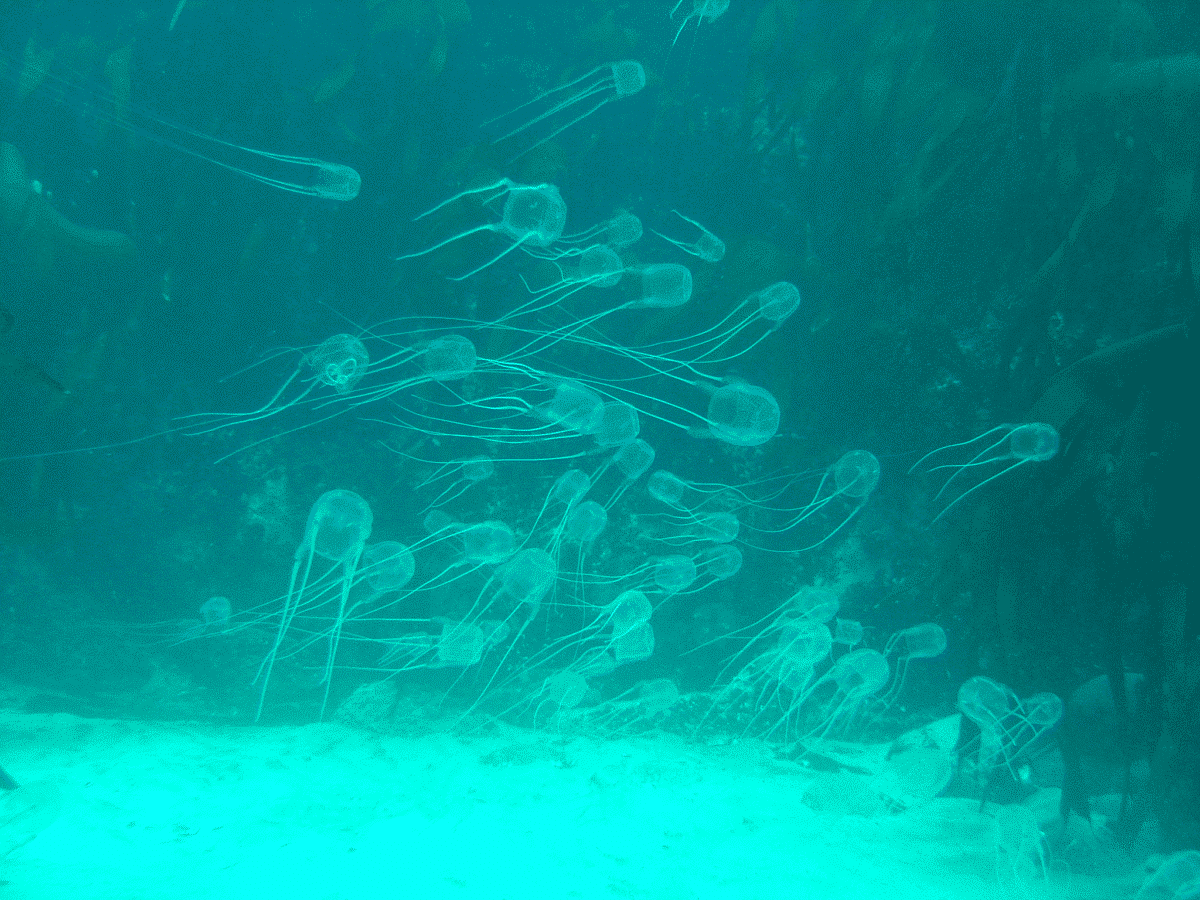
- Are Great White Sharks A Threat To Humans?
Most attacks occur when a shark mistakes a human for its natural prey, such as a seal or sea lion. However, interactions with Great White Sharks can be dangerous. People need to exercise caution when swimming or surfing in areas with high populations of these sharks.
- How Dangerous Is The Sting Of An Australian Box Jellyfish?
The sting of an Australian Box Jellyfish is extremely dangerous. It can cause excruciating pain, nausea, vomiting, abdominal cramps, difficulty breathing, and even cardiac arrest. The venom rapidly affects the victim’s skin cells, heart, and nervous system. Immediate medical attention is required in the event of a sting, and appropriate first aid measures, such as vinegar application, should be followed before seeking professional help.
- Can A Great White Shark Survive An Encounter With An Australian Box Jellyfish?
While a Great White Shark’s thick skin and tough scales might provide some protection against the Australian Box Jellyfish’s stinging cells, a direct encounter with the tentacles could still be disastrous for the shark. The venomous sting could cause intense pain and affect the shark’s ability to hunt and feed. However, specific encounters between these two species are rare due to their different habitats and behavior patterns.
Wrapping Up with Great White Shark vs. Australian Box Jellyfish
The clash between the Great White Shark and the Australian Box Jellyfish represents an intriguing battle between two iconic oceanic creatures. With their contrasting features, unique adaptations, and captivating survival strategies, they continue to captivate our imaginations. As we navigate the ocean’s depths, let us cherish and protect these magnificent creatures, marveling at the wonders of nature beneath the waves.
Next up:
- The Great White Shark vs. The Lethal Irukandji Jellyfish
- Fearsome Saw-Scaled Viper Bite
- Great White Shark Vs. Portuguese Man O’ War
Join our Forum for free today!

- Surprised By A Snake In My Toilet In Bali - July 24, 2024
- Discover the Profound Spiritual Meaning of the Brown Bear - July 24, 2024
- Unexpected Snake Slithers Across My Windshield On Arizona Highway - July 23, 2024

